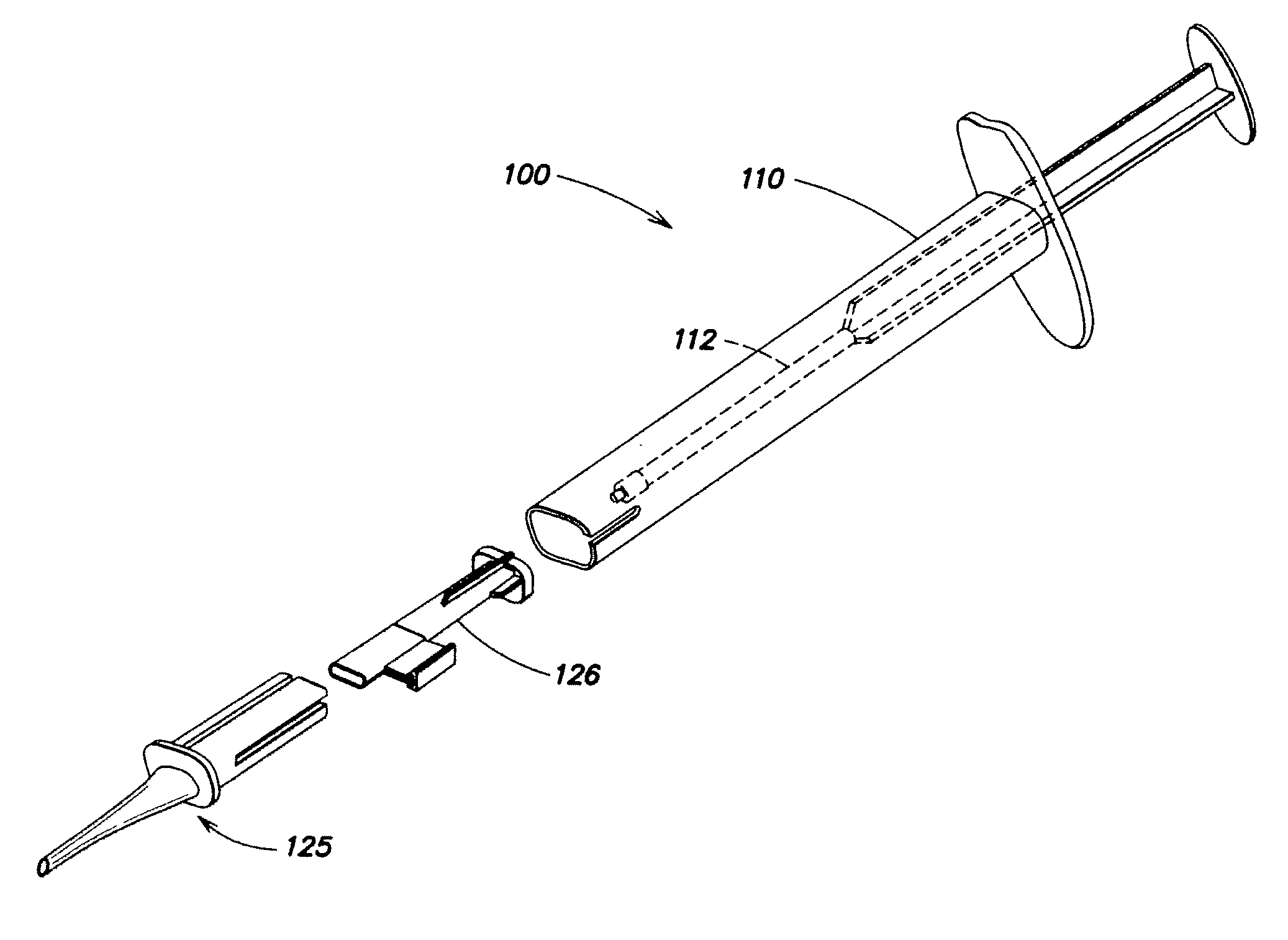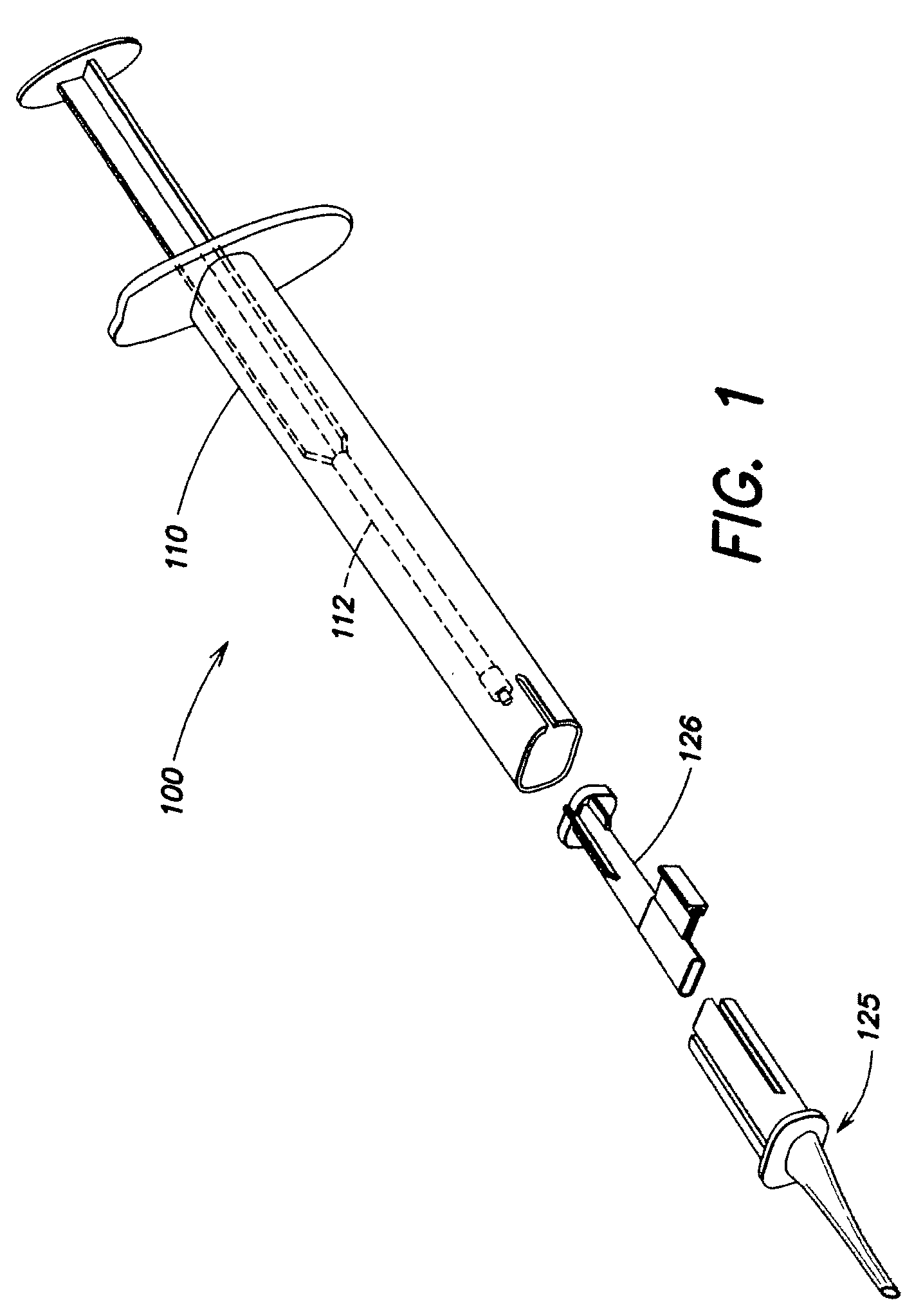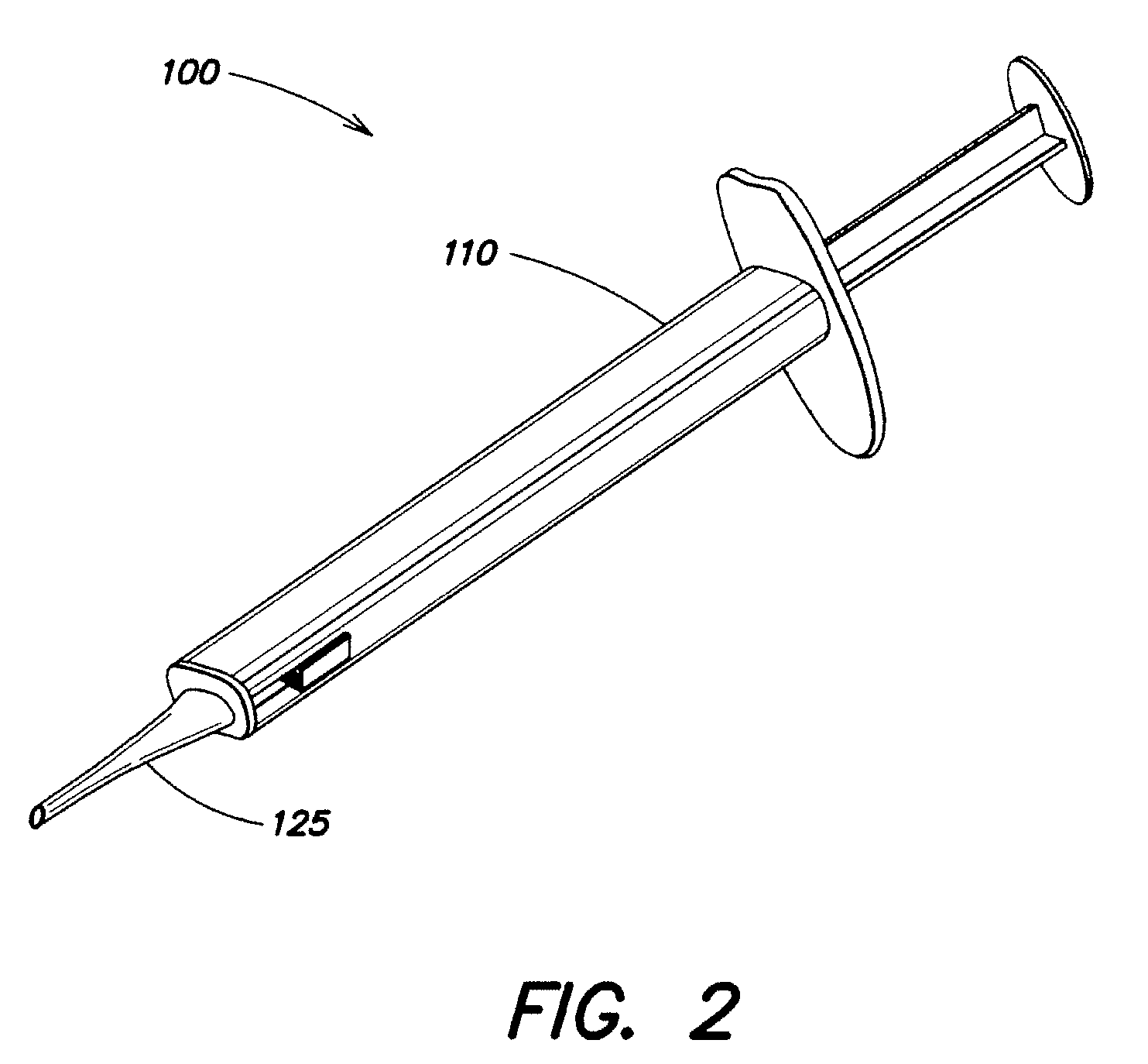Intraocular Lens Injector with Hydrophilic Coating
- Summary
- Abstract
- Description
- Claims
- Application Information
AI Technical Summary
Benefits of technology
Problems solved by technology
Method used
Image
Examples
examples
Irradiation Apparatus
[0037]The AI28 and AI20 inserter t-cells, which are manufactured by Bausch & Lomb, Inc., were exposed to high energy UV-C light using an irradiation apparatus. The UV irradiation apparatus is a UVO-CLEANER® Model 342 manufactured by Jelight Company, Inc. of Irvine, Calif. The UV irradiation apparatus 40 resembles an electric broiler with the UV lamp assembly 46 along the top side and a sliding drawer 42 equipped with a sample tray 44 (shown in open position). The t-cells are placed in the tray approximately six inches from the lamp assembly. The UV irradiation source is a low pressure mercury vapor grid with an output of 28,000 μW / cm at 254 nm (at 6 mm). The t-cells were exposed to this light in air or a flow of dioxygen for 12 minutes.
X-ray Photoelectron Spectroscopy (XPS) Apparatus
[0038]A Physical Electronics Quantum 2000 Scanning ESCA Microprobe was used for the surface characterization of the t-cell before (control cells) and following UV irradiation. This i...
example 22 to 24
[0043]UV-C treated AI20 t-cells were coated with three different concentrations (Ex. 22, 10%; Ex. 23, 15%; and Ex. 24, 20%) of (60:40) PVP-vinyl acetate copolymer solution as described above. The injection force required to deliver Akreos MI-60 IOL was measured using an Instron test system. T-cells were not sterilized for this study. +20.0 D lenses and Amvisc Plus viscoelastic was used for all lens deliveries. The force data reported in Table 4 indicates that Example 24, i.e., a coating solution of 20% (60:40) PVP:VA required the least amount of force to deliver a lens (a relatively low average peak injection force of 317 gm-f along with a tighter standard deviation of 16). An average 581 gm-f peak force is required to deliver standard +20D MI60 lenses with a GMS / PP AI20 system (control). Accordingly, UV-C treated AI20 t-cells coated with the solution of Example 24 exhibits a reduction in delivery force of about 45%.
TABLE 4additiveEx. No.Force gm-f, N = 5transferobservations22429 (7...
examples 25 to 27
[0044]An accelerated aging study was conducted to estimate the shelf-life of PVP:VA copolymer coated AI28 t-cells stored at 82° C. over 6 days (this simulates at least 1 year of room temperature performance based on the accelerated shelf life prediction equation: treal=tacc×2(Ta-22° C.) / 10, where Ta is the accelerated temperature and t is time. The t-cells were exposed to UV-C radiation and manually dip coated with a PVP:VA (60:40) copolymer coating as described previously. The coated parts were dried in an oven at 85° C. for 1 hour before aging in an oven at 82° C. Samples were tested at time 0, Day 3 (6 months RT) and Day 6 (12 months RT). Mid-power Akreos Adapt AO IOLs were used for testing lens deliveries. The 6-day test data reported in Table 5 shows that the coating was robust and performed exceptionally well under the aggressive test conditions.
TABLE 5coatingEx.coatingtransferNo.t-cell# trialscompositionratingobservations25AI28510% PVP-VAa05 smooth deliveries,no optic damage2...
PUM
| Property | Measurement | Unit |
|---|---|---|
| Temperature | aaaaa | aaaaa |
| Temperature | aaaaa | aaaaa |
| Fraction | aaaaa | aaaaa |
Abstract
Description
Claims
Application Information
 Login to View More
Login to View More - R&D
- Intellectual Property
- Life Sciences
- Materials
- Tech Scout
- Unparalleled Data Quality
- Higher Quality Content
- 60% Fewer Hallucinations
Browse by: Latest US Patents, China's latest patents, Technical Efficacy Thesaurus, Application Domain, Technology Topic, Popular Technical Reports.
© 2025 PatSnap. All rights reserved.Legal|Privacy policy|Modern Slavery Act Transparency Statement|Sitemap|About US| Contact US: help@patsnap.com



